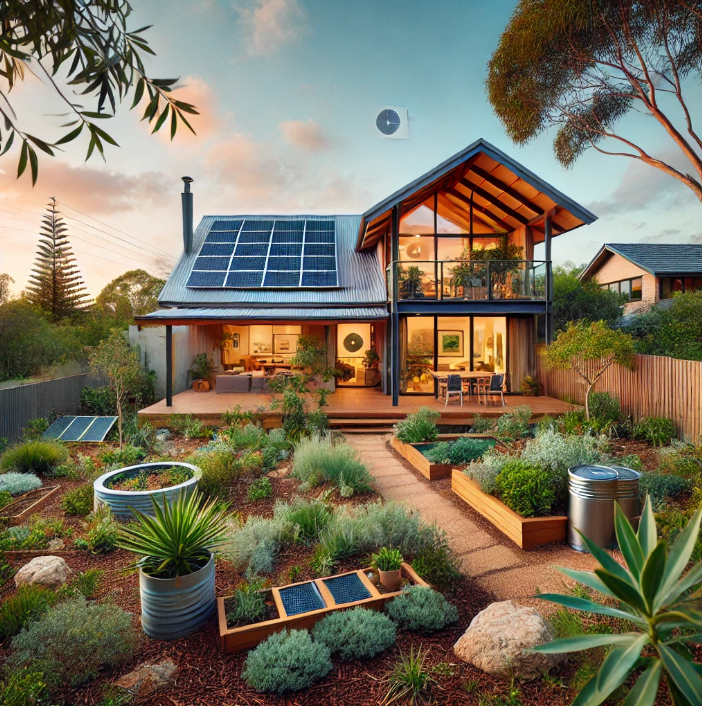As environmental consciousness rises, so does the demand for sustainable living. Homebuyers in Perth are increasingly seeking eco-friendly properties that not only reduce their carbon footprint but also offer a healthier lifestyle. As a Buyers Agent Perth, your expertise in identifying and understanding sustainable homes is vital. This detailed guide explores the essential features of eco-friendly properties, their benefits, and how to effectively identify and present these homes to your clients in Perth.
Key Features of Sustainable Homes
- Energy Efficiency:
Solar Panels:
Solar panels are a cornerstone of sustainable homes, converting sunlight into electricity and significantly reducing reliance on fossil fuels. Look for properties with a high number of panels and a robust inverter system.
Insulation:
Proper insulation in the roof, walls, and floors is crucial. It minimizes energy loss, keeping homes warm in winter and cool in summer. Check for high R-value insulation materials which indicate better thermal performance.
Energy-Efficient Windows:
Double or triple-glazed windows are essential for maintaining internal temperatures and reducing energy use. They also help in noise reduction and improving security.
- Water Conservation:
Rainwater Harvesting Systems:
These systems collect and store rainwater for various household uses, such as gardening, toilet flushing, and laundry. Ensure the system has adequate storage capacity and proper filtration to make the water usable.
Low-Flow Fixtures:
Modern low-flow faucets, showerheads, and toilets can significantly cut water usage without compromising performance. Look for fixtures with Water Efficiency Labelling and Standards (WELS) ratings.
- Sustainable Materials:
Recycled or Renewable Building Materials:
Materials like bamboo, recycled steel, and reclaimed wood not only reduce the environmental impact but also provide unique aesthetic qualities. Verify the sourcing of these materials to ensure they meet sustainability standards.
Non-Toxic Paints and Finishes:
Low or zero VOC paints and finishes improve indoor air quality by reducing the release of harmful chemicals. This is especially important for families with children or individuals with respiratory issues.
- Smart Home Technology:
Automated Systems:
Smart thermostats, lighting systems, and security features can optimize energy use, enhance comfort, and provide convenience. Ensure the home has a robust smart home infrastructure that is user-friendly and expandable.
Energy Monitoring:
Energy monitoring systems track usage in real-time, helping homeowners identify energy drains and adjust their habits. These systems can often be controlled via smartphone apps, offering easy access and control.
- Eco-Friendly Landscaping:
Native Plants:
Landscaping with native plants requires less water and maintenance, supporting local biodiversity and reducing the need for fertilizers and pesticides. Evaluate the garden design for its use of native flora and sustainable gardening practices.
Composting Systems:
Composting systems convert organic waste into valuable fertilizer for the garden, reducing landfill waste and promoting a healthy garden ecosystem.
Benefits of Sustainable Homes
- Cost Savings:
Lower Utility Bills:
Sustainable homes typically have reduced energy and water consumption, leading to significant savings on utility bills. Solar power, efficient insulation, and water-saving fixtures contribute to these cost reductions.
Government Incentives:
There are various rebates and tax incentives available for installing renewable energy systems and making energy-efficient upgrades. Familiarize yourself with these programs to inform your clients about potential financial benefits.
- Health Benefits:
Improved Air Quality:
Non-toxic building materials, proper ventilation, and reduced use of chemicals contribute to better indoor air quality, which can enhance overall health and well-being.
Natural Light:
Sustainable homes often incorporate large windows and skylights to maximize natural light, reducing the need for artificial lighting and boosting mood and productivity.
- Environmental Impact:
Reduced Carbon Footprint:
By using renewable energy sources and energy-efficient systems, sustainable homes significantly lower greenhouse gas emissions, contributing to a healthier planet.
Conservation of Resources:
Sustainable practices in water use, material selection, and energy consumption help conserve valuable natural resources, promoting long-term environmental sustainability.
- Property Value:
Higher Resale Value:
The growing demand for eco-friendly homes can lead to higher market values and better resale potential. Sustainable features are increasingly seen as desirable by homebuyers.
Future-Proof Investment:
Homes built with sustainability in mind are more likely to meet future environmental regulations and standards, making them a wise long-term investment.
Identifying Sustainable Homes in Perth
- Research Developments:
Green Developments:
Investigate new housing projects focused on sustainability. Look for developments certified by the Green Building Council of Australia or those featuring extensive sustainable features.
Established Eco-Friendly Communities:
Identify areas known for their commitment to environmental practices. These communities often have shared resources and initiatives that promote sustainable living.
- Inspection and Verification:
Energy Ratings:
Properties with high energy ratings, such as a National House Energy Rating Scheme (NatHERS) score of 7 or above, are prime candidates. These ratings indicate superior energy efficiency and performance.
Sustainability Certifications:
Verify if the property has certifications like Green Star, NABERS, or LEED. These certifications ensure the home meets stringent sustainability criteria.
- Consult with Experts:
Sustainability Consultants:
Work with professionals who specialize in green building practices. They can provide detailed assessments of a property’s sustainability and suggest improvements.
Local Authorities:
Engage with local councils and environmental organizations for information on sustainable housing initiatives and support programs.
- Client Education:
Inform Buyers:
Educate your clients on the benefits and features of sustainable homes. Highlight cost savings, health benefits, and environmental impact to build a compelling case.
Provide Resources:
Share guides, websites, and other resources that help clients understand and maintain the sustainability of their new home.
Conclusion
Sustainable homes are not just a trend but a significant shift towards more responsible and healthier living. In Perth, where environmental awareness is growing, understanding the features, benefits, and identification of eco-friendly properties is essential for any Buyers Agent Perth. By guiding your clients to make informed decisions, you not only help them find a home that meets their needs but also contribute to a more sustainable future.
Embrace the green revolution in real estate and position yourself as an expert in sustainable living. Your knowledge and dedication to eco-friendly properties can set you apart in the market, attracting clients who value sustainability and quality living.

